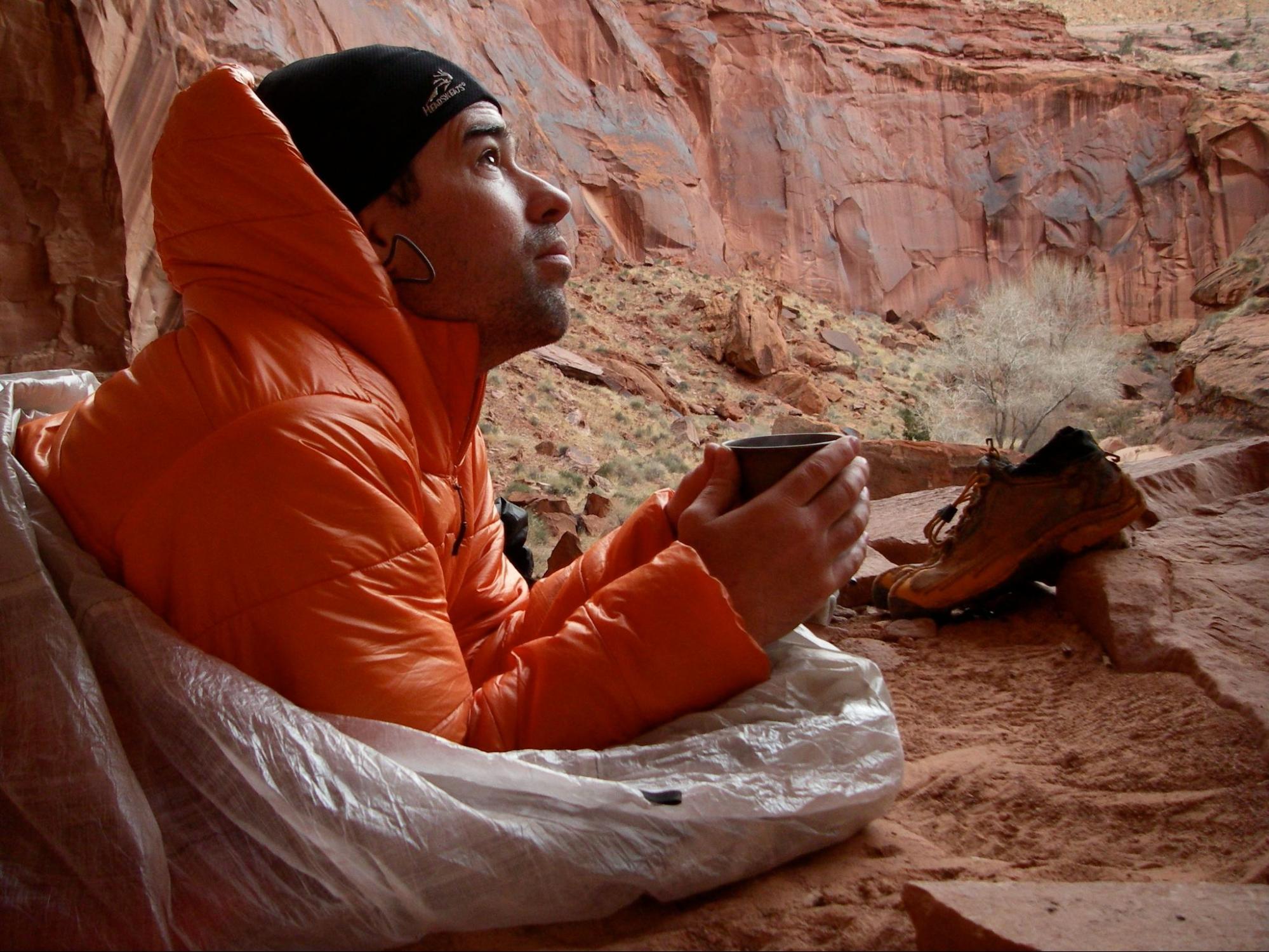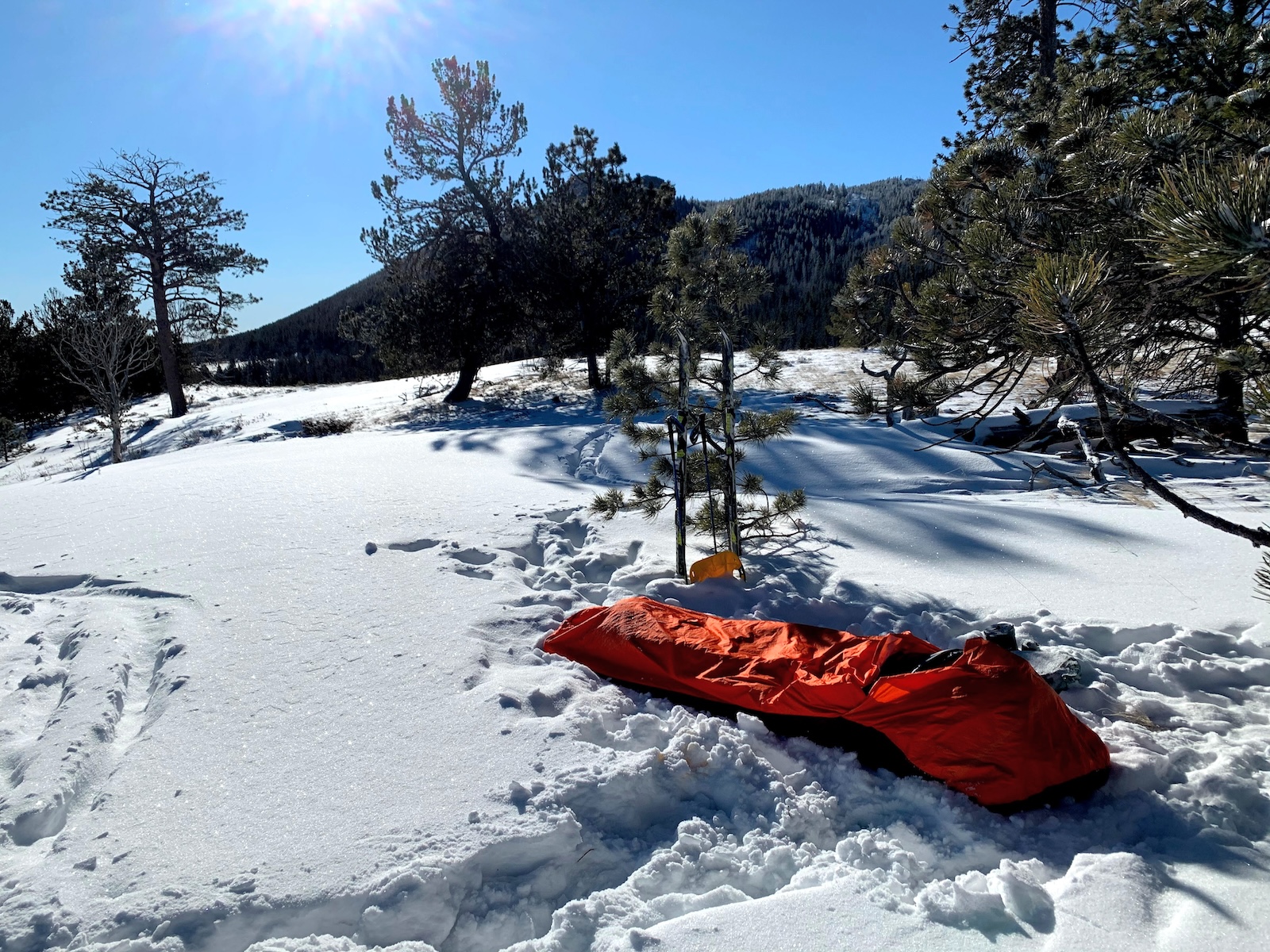“They are the best of nights: they are the worst of nights. The modern lightweight tent has opened up the wilderness – but for an increasing number of people, the lightweight tent is just a bit too civilised. Can you really experience nature’s rawness from inside a zipped-up storm-flap? For those who want to bring a bit of old-fashioned pain and suffering back into the outdoor experience, the bivvybag is the place to be.” – Ronald Turnbull, The Book of the Bivvy.

My experience camping in a bivy sack can be traced to the late 1980s when I started properly exploring the wilderness in Washington State’s Olympic Range. A bivy sack was the second shelter I owned (a blue plastic tarp was the first). Mine was made by Moonstone Mountaineering, fashioned from 2-layer Goretex that was both questionably breathable and questionably waterproof. These dubious qualities, combined with the fact that the Olympics enjoy more than 100 inches of annual rainfall, probably made for both pain and suffering. Interestingly, I remember very little of that. What I do remember are the nights spent in rainforests and meadow edges, atop basalt ridges and peak summits, and on platforms of ice carved into a glacier with my fiberglass-handled ice axe. They were some of the most memorable and rewarding nights of my entire life. Sure, some nights were wet. Many nights were a little chilly. But the discomfort never dampened the fond memories. Waking up to a baby goat sniffing my forehead. Outrageous sunrises. The solitude of sleeping in remote alpine perches large enough for only one human body.
It is from this context that I’m reviewing the MSR Pro Bivy sack, a modern day, 2-layer shelter bag devoid of features, and about as breathable and water-resistant as my Moonstone bivy sack from 40 years ago.

MSR writes in its marketing copy for the Pro Bivy, “Designed for professional alpinists and serious adventurers…” Whenever I read something like this, I immediately translate it to “Saves weight by removing features that will result in pain and suffering unless you are a professional alpinist or serious adventurer.”
Specifications: MSR Pro Bivy
- Length: 88 inches / 224 cm
- Width: 36 inches / 91 cm
- Weight: 10 ounces / 285 g
- Packed Size: 8 x 4 inches (20 x 10 cm)
- Upper Fabric: 20D ripstop nylon 2-layer breathable 1000 mm
- Floor Fabric: 15D ripstop nylon 1200mm polyurethane
Of course, this type of marketing may be attractive to those of us who pose as serious adventurers, even though we will invoke complex reasoning (even if executed by our monkey brain) to justify why we won’t be packing a bivy sack on our next trip!
That’s why I get a little worried about my faculties (mental or otherwise) when I get excited to use my bivy sack as my sole shelter.
To that end, the MSR Pro Bivy has re-ignited that excitement in this phase of my life. It reminds me of my 20s, when there was no decision-making matrix between choosing a tent, tarp, or bivy sack. The bivy sack always won.

Here’s why I love my MSR Pro Bivy vs. other bivy sacks I’ve used in recent years:
1. Its compact pack size. While it lacks the breathability and condensation management offered by other bivy sacks made with 3-layer waterproof-breathable fabrics, the packed size of the MSR Pro Bivy is tiny. I can stuff it into the smallest nooks and crannies of my backpack.
2. Its generous room for gear storage, thick sleeping pads, and winter sleeping bags. An 88-inch length gives me plenty of room for gear storage in the hood of the bivy (including, often, my backpack).
3. Its pitching and design simplicity. No stakeout points, no poles, no zippers. Just fabric. Nothing to break, fiddle with, or adjust.
Some of these features, of course, are also limitations. The 2-layer PU-coated fabric and lack of pole structure means the MSR Pro Bivy is not great at managing interior condensation. The zipperless design means that you are protected from the elements only by two overlapping layers of fabric at the hood end, exposing the bivy a little bit from rain, spindrift, and insects.

But for me, these are the usual limitations of ultralight bivy sacks, and I’ll happily take them in exchange for a 10-ounce shelter that I don’t need to “pitch”.
In conclusion, if you’re shopping around for a full-featured bivy sack with poles and stake loops and mesh windows and zippers, you’re going to have a hard time justifying its weight and cost. Consider instead something like a Gossamer Gear Whisper (9.8 oz), ZPacks Plex Solo (13.9 oz) or a Durston X-Mid Pro 1 (15.7 oz), all of which will provide far better livability than any full-featured bivy sack on the market for less weight.
But if The Book of the Bivvy sits next to your favorite religious text on your bedside table, then the MSR Pro Bivy may be exactly what you’re looking for. Unlike other bivy sacks, which ruined bivy sacking for generations of users with bells, whistles, and features that make them feel more like really bad tents than really good bivy sacks, the MSR Pro Bivy embodies everything about bivy sack camping that makes bivy sack camping an immensely satisfying way to enjoy the backcountry.

Where to Buy
- Learn more & purchase the MSR Pro Bivy at MSR or Backcountry.com
Related Content
- Author: Read more by Ryan Jordan.
- Forums: Learn more about incorporating a bivy into your winter kit!
- Forums: Learn more about choosing a bivy for the desert.
DISCLOSURE (Updated April 9, 2024)




Home › Forums › MSR Pro Bivy Review